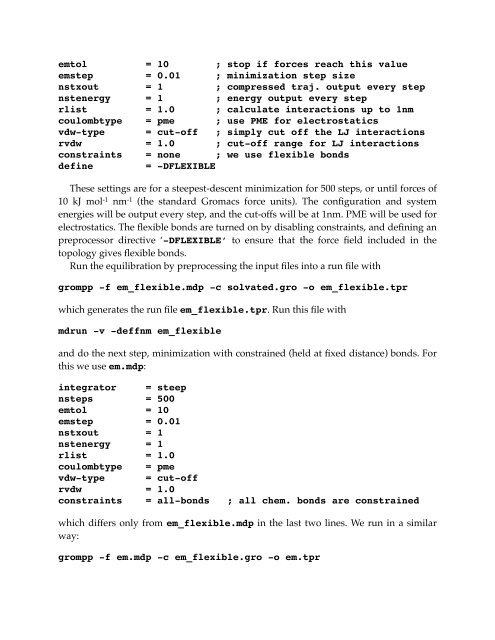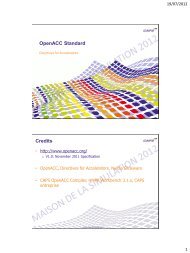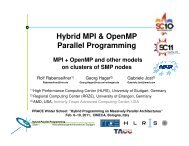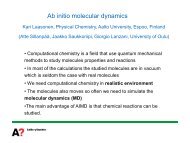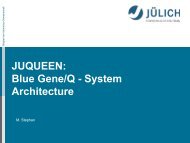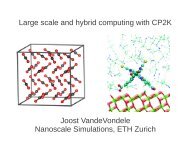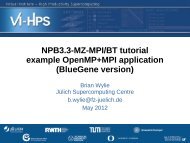Molecular Simulation Methods with Gromacs
Molecular Simulation Methods with Gromacs
Molecular Simulation Methods with Gromacs
Create successful ePaper yourself
Turn your PDF publications into a flip-book with our unique Google optimized e-Paper software.
emtol = 10 ; stop if forces reach this valueemstep = 0.01 ; minimization step sizenstxout = 1 ; compressed traj. output every stepnstenergy = 1 ; energy output every steprlist = 1.0 ; calculate interactions up to 1nmcoulombtype = pme ; use PME for electrostaticsvdw-type = cut-off ; simply cut off the LJ interactionsrvdw = 1.0 ; cut-off range for LJ interactionsconstraints = none ; we use flexible bondsdefine= -DFLEXIBLEThese settings are for a steepest-descent minimization for 500 steps, or until forces of10 kJ mol -1 nm -1 (the standard <strong>Gromacs</strong> force units). The configuration and systemenergies will be output every step, and the cut-offs will be at 1nm. PME will be used forelectrostatics. The flexible bonds are turned on by disabling constraints, and defining anpreprocessor directive ‘-DFLEXIBLE’ to ensure that the force field included in thetopology gives flexible bonds.Run the equilibration by preprocessing the input files into a run file <strong>with</strong>grompp -f em_flexible.mdp -c solvated.gro -o em_flexible.tprwhich generates the run file em_flexible.tpr. Run this file <strong>with</strong>mdrun -v -deffnm em_flexibleand do the next step, minimization <strong>with</strong> constrained (held at fixed distance) bonds. Forthis we use em.mdp:integrator = steepnsteps = 500emtol = 10emstep = 0.01nstxout = 1nstenergy = 1rlist = 1.0coulombtype = pmevdw-type = cut-offrvdw = 1.0constraints = all-bonds ; all chem. bonds are constrainedwhich differs only from em_flexible.mdp in the last two lines. We run in a similarway:grompp -f em.mdp -c em_flexible.gro -o em.tpr


